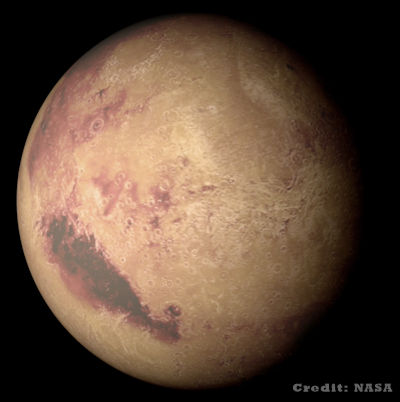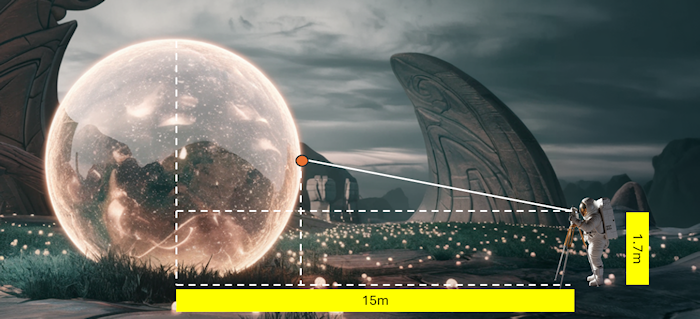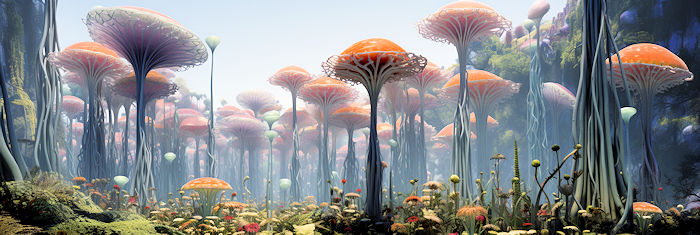
 |
Miscellaneous Exam-Style Questions.Problems adapted from questions set for previous Mathematics exams. The questions selected here all contain the text 'Planet'. |
1. | GCSE Higher |
The following table shows the distance from the sun and mass of the eight planets.
| Planet | Distance from the Sun (km) | Mass (tonnes) |
|---|---|---|
| Mercury | 5.79×107 | 3.3×1020 |
| Venus | 1.08×108 | 4.87×1021 |
| Earth | 1.5×108 | 5.98×1021 |
| Mars | 2.28×108 | 6.42×1020 |
| Jupiter | 7.78×108 | 1.9×1024 |
| Saturn | 1.43×109 | 5.69×1023 |
| Uranus | 2.87×109 | 8.68×1022 |
| Neptune | 4.5×109 | 1.02×1023 |
(a) Which planet has the second smallest mass?
(b) Find the difference between the mass of Saturn and the mass of Jupiter.
(c) It is claimed that Saturn is about ten times further from the sun than the Earth. By showing your working explain why you either agree or disagree with this statement.
2. | GCSE Higher |
The surface gravity, \(g\), of a planet is the gravitational acceleration experienced at its surface. The following formula can be used to find how a planet's gravity compares to Earth's.
$$g=\frac{6.67 \times 10^{-11} \times m}{r^2}$$Where \(m\) is the mass of the planet and \(r\) is the radius.
Find the ratio of the surface gravity on Jupiter and the surface gravity Mars. Give your answer in the form \(n:1\).
| Mass (kg) | Radius (m) | |
| Jupiter | 1.90 × 1027 | 6.68 × 107 |
| Mars | 6.39 × 1023 | 3.39 × 106 |
3. | IB Analysis and Approaches |
NASA’s Transiting Exoplanet Survey Satellite (TESS) has discovered a planet between the sizes of Mars and Earth orbiting a bright, cool, nearby star. The planet, called L 98-59b, marks the smallest found by TESS yet. The radius of L 98-59b is \(5.42\times 10^6\) m.

(a) Write down the diameter of the planet in kilometers.
The volume of the planet in cubic kilometers can be expressed in the form \(n\times 10^k\), where \( 1 \le n\lt 10,k\in \mathbb Z\)
(b) Find the value of \(n\) and the value of \(k\).
4. | IB Analysis and Approaches |
An astronaut measures the angle of elevation of a light on the surface of a mysterious sphere on a faraway planet.
The light is level with the centre of the sphere, so its distance above the ground is equal to the radius of the sphere.
The astronaut measures the angle to be 20°, and his theodolite is 15 metres away from the centre point where the sphere touches the ground. The theodolite is 1.7 metres tall.

(a) Calculate the radius of the sphere.
(b) Calculate the volume of the sphere.
5. | IB Analysis and Approaches |
The heights, H metres, of flowers called Xylothorn Blooms growing in the dense forests of Verdantem on the luminous planet Aurorion can be modelled by a normal distribution with mean 14.3 metres and standard deviation 3.9 metres.

(a) One of the flowers is selected at random. Find the probability that its height more than 15.5 metres.
According to this model, 40% of the flowers have a height between \(x\) metres and 15.5 metres.
(b) Find the probability that a randomly selected flower has a height less than \(x\) metres.
(c) Find the value of \(x\).
(d) Ten flowers are selected at random.
Find the probability that no more than two of the flowers has a height less than \(x\) metres.
If you would like space on the right of the question to write out the solution try this Thinning Feature. It will collapse the text into the left half of your screen but large diagrams will remain unchanged.
The exam-style questions appearing on this site are based on those set in previous examinations (or sample assessment papers for future examinations) by the major examination boards. The wording, diagrams and figures used in these questions have been changed from the originals so that students can have fresh, relevant problem solving practice even if they have previously worked through the related exam paper.
The solutions to the questions on this website are only available to those who have a Transum Subscription.
Exam-Style Questions Main Page
To search the entire Transum website use the search box in the grey area below.